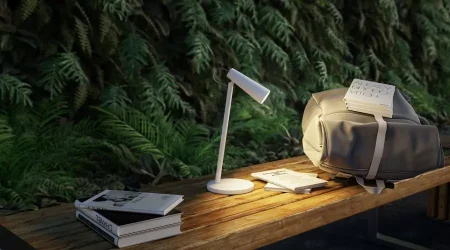Adobe Substance 3D collection has acted as a powerhouse of creative tools for designers all over the world, with each application serving a different purpose in the various stages of designing. Adobe Substance 3D Designer is one such software in the powerful mix of tools. It provides quick solutions for modelling, rendering, and material creation. In this blog, we will talk about what the Substance 3D Designer does for you and what module it uses to deliver the efficiency it has.
Evolution of Adobe Substance 3D Designer Over The Years
Allegorithmic, which specialised in tools for 3D modeling, developed the Substance toolkit which rapidly earned widespread acclaim among artists across the world. Originally designed to improve material creation workflows, these tools soon became integral at various stages throughout the entire 3D production process.
The pivotal moment arrived when Adobe purchased Allegorithmic in 2019, bringing with it an array of creative software. The acquisition broadened Substance’s range to include modelling tools, rendering capabilities and more – evolving the platform into the Substance 3D collection. As a result, Substance excels not only at material creation but also at various other features. Visit Adobe’s website today.
Understanding the 3D Pipeline
To fully comprehend the workings of Adobe Substance 3D Designer, one must first understand the 3D pipeline that it operates within. The process of designing in three dimensions involves a multitude of phases including asset creation, digital geometry formation, UV unwrapping and rigging culminating with a compositional material design featuring lighting adjustments before producing a final image. As such, initially intended solely to improve upon material development capabilities – Substance has since expanded its functionality into every stage entailed by this complex procedure.
Examining Adobe Substance 3D Designer in Depth
Being a node-based tool in the Substance 3D collection, Adobe Substance 3D Designer offers you unparalleled ease in creating complex material files. Its non-linear workflow approach enables artists to make modifications throughout the design process with flexibility. Additionally, its capability of producing procedural materials lends dynamism and guarantees infinite variations for creations made using this software.
Initially, Adobe Substance 3D Designer’s main focus centred around developing materials. Its advanced capabilities allowed artists to create highly detailed textures that enhanced the realism of 3D models without relying on conventional 2D software such as Photoshop for material painting. This marked a significant shift in game development practices and set a new standard for texture creation.
Adobe Substance 3D Designer and the Suite Now
The Substance 3D collection from Adobe now features an expanded selection of tools, each tailored to specific needs. For instance, with Substance Painter artists can paint on 3D objects directly while the Substance Sampler is designed for transforming real-world scans into digital materials. Additionally, the highly versatile rendering tool known as Substances Stager creates breathtaking visuals by converting intricate models into stunning representations.
The collection has gained a remarkable inclusion – the Substance 3D Modeler. It is tailored for creating clay-like 3D models, and it adds an entirely different level to the Substance suite. With this tool, producing modelled designs becomes more straightforward while allowing conventional sculptors who prefer working with natural clays access to modern technology. Install Adobe right away.
Design beyond the procedural approach.
By providing procedural design capabilities, Adobe Substance 3D Designer enables artists to create an array of materials with seamless patterns, image filters, and environment lights that have infinite variations. The node-based workflow ensures every stage of the design process is non-destructive- a feature that allows freedom for experimentation by artists.
Adobe Substance 3D Designer’s flexibility is evident in its ability to produce a variety of design elements, including 3D materials, patterns, image filters and lights. Furthermore, with an expanding collection of content at your disposal along with access to numerous nodes, filters and randomizable noises; the software presents limitless options for three-dimensional designers.
Collaboration with Other Tools
Adobe Substance 3D Designer’s compatibility and integration with various 3D applications is one of its top strengths. With well-developed workflows and plugins, the software enables easy collaboration with nearly all 3D apps, thereby becoming an ideal pick for multi-platform artists.
The integration goes beyond the confines of the Substance suite as it aids in an open ecosystem that makes sending materials and filters to different applications under Substance 3D smooth. Adobe’s dedication towards delivering a comprehensive and adaptable 3D design solution is reflected by this interoperability feature.
Support for MDL, Color Management, and HDR Lighting
Substance 3D Designer offers more than just fabric generation. Among its features is the capacity to generate high dynamic range (HDR) lighting, which empowers users to develop parametric light settings using procedural illumination or panoramic images. The software strengthens colour management with Pantone and OpenColorIO support guarantees precise representation of colours.
In addition, the software enables users to produce MDL materials using a specialized shader graph via its support for Material Definition Language (MDL). By accommodating other rendering engines, this capability promotes a smoother and more effective workflow for 3D designers.
Collaboration between the Designer’s Academy and the community
Adobe acknowledges the significance of education and collaboration within communities in the scope of 3D designing. The Designer’s Academy provides advanced 3D design technology that is utilised by professionals in different industries who have garnered recognition for their achievements. Beginner designers as well as those with experience benefit from access to tutorials and foundation videos which help them fully explore Substance Designer’s capabilities.
The Substance ecosystem boasts community collaboration as one of its key strengths. By perusing the extensive collection of assets available in the Substance 3D Assets library, users can gain valuable knowledge about node graphs and utilize these resources to get a head start on new projects. With this supportive environment that encourages creativity and innovation among its members, collaborative efforts thrive in the community.
Adobe Substance 3d Designer free download
You can easily download Substance Designer at the Adobe official website. The website even offers you a free trial of the Substance 3D collection which includes Substance 3D Modeler, Sampler, Designer, Painter, and Stager. You also get 100 GB of cloud storage plus 25 monthly generative credits. Post the trial, you can resume your subscription for US$49.99/mo.
Conclusion
The Substance 3D collection continues to dominate the 3D design industry, consistently growing and innovating. Adobe 3D Substance Designer used to be just for making materials, but now it does a lot more- it helps with making 3D models, creating images, and designs in the most innovative way. Adobe is always working on new ideas and teaming up with others to make Substance Designer even better. Check out the official website to see what Adobe’s Substance 3D Designer can do for your 3D designs!
For more information, visit Findwyse.
FAQs
.


















